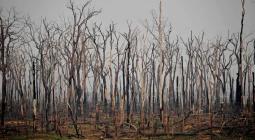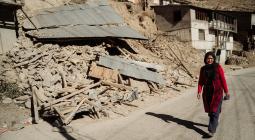End ‘delaying tactics’ on loss and damage fun

In recent years, the world has witnessed a series of devastating climate disasters. Severe storms, unprecedented heatwaves, and wildfires have underscored the growing impact of climate change. Coastal regions are experiencing stronger storms and rising sea levels, while inland areas face prolonged droughts and water scarcity.
These disasters illustrate how much the situation has deteriorated due to the global temperature. The consequences are felt globally, with developing countries bearing a disproportionate burden in terms of lives lost, displacement, economic disruptions, and ecological damage.
The fund, a momentous decision
At COP27 in Sharm-el-Sheikh, a momentous decision was reached to establish a new loss and damage fund to address the impacts of climate change on vulnerable countries and communities. The outcome also recognized the importance of funding arrangements such as humanitarian aid and bilateral and multilateral financing in response to climate disasters.
The Transitional Committee, comprising 24 members with 10 from developed and 14 from developing countries, was established at COP27. Its mandate is to make recommendations on the operationalization of both the new funding arrangements and the Loss and Damage Fund for consideration and adoption at COP28. The committee’s work will be informed by inputs from various events, including the second Glasgow Dialogue during the mid-year session of the UNFCCC in the German city of Bonn.
Delaying tactics of wealthier nations
However, it is disheartening to witness certain parties prioritizing funding arrangements outside the UNFCCC over the crucial operationalization of the Loss and Damage Fund by COP28. This narrow perspective undermines the gravity of the situation and the urgent need for comprehensive support.
The UNFCCC synthesis report has clearly highlighted the staggering financial requirements, projecting the need for 290 to 580 billion US dollars by 2030, rising to 1 trillion US dollars by 2050 in developing countries alone. These figures underscore the substantial funding gap in addressing loss and damage. It is vital to acknowledge that this situation arises from the inaction, obstruction, and delaying tactics employed by wealthier nations regarding loss and damage finance over the past years.
The imperative: Protecting the rights of those affected
Moving forward, it is imperative that we demonstrate greater ambition and creativity, developing new solutions that adequately respond to the needs of the most vulnerable communities. Our actions should not be constrained by the current context or available resources; instead, they should be driven by the imperative to protect the rights of those impacted by climate change. We must not shy away from establishing new systems and institutions to address this crisis effectively.
The operationalization of the loss and damage fund must be guided by principles such as international cooperation and solidarity, historical responsibility, the precautionary principle – which means that people should be protected from possible risks -, and the polluter pays principle.
Local ownership, an adaptable system
The fund should provide new and additional, adequate, and predictable finance that meets the needs of vulnerable communities and countries. It should prioritize local ownership, encompass gender responsiveness, ensure equitable representation, and be public and grant-based. The fund must be balanced, comprehensive – covering the range of climate impacts from extreme weather to slow onset events as well as responding to economic and non-economic aspects of losses and damages – and safeguard human rights.
Our goal for COP28 should extend beyond the mere creation or rebranding of institutions for the sake of political gains or media attention. True success lies in establishing an agile and adaptable system that learns from emerging challenges, actively engages affected communities, scales up proven solutions, and develops new approaches as needed.
Public funding sources, subsidy reduction, new levies
The allocation of resources to the fund must align with the magnitude of the needs it aims to address. Public finance must serve as the primary source of funding, supplemented by additional avenues such as redirecting fossil fuel subsidies, implementing a levy on fossil fuel extraction, and introducing progressive taxes on financial transactions, shipping, and aviation sectors.
It is crucial that this system is built on the principles of responsibility and accountability towards those confronting the climate emergency.
Time is running out rapidly, demanding our collective rejection of complacency and half-hearted efforts. Establishing an effective loss and damage fund is not an option; it is both a moral and legal imperative. Let us seize this opportunity to create a robust system that provides the necessary support and protection to those most affected by climate change. Our response must reflect the urgency and gravity of the situation, showcasing an unwavering commitment to a fair, just, resilient, and sustainable future.
Harjeet Singh is Head of Global Political Strategy at Climate Action Network International (CAN).
Harjeet Singh, Head of Global Political Strategy, CAN





